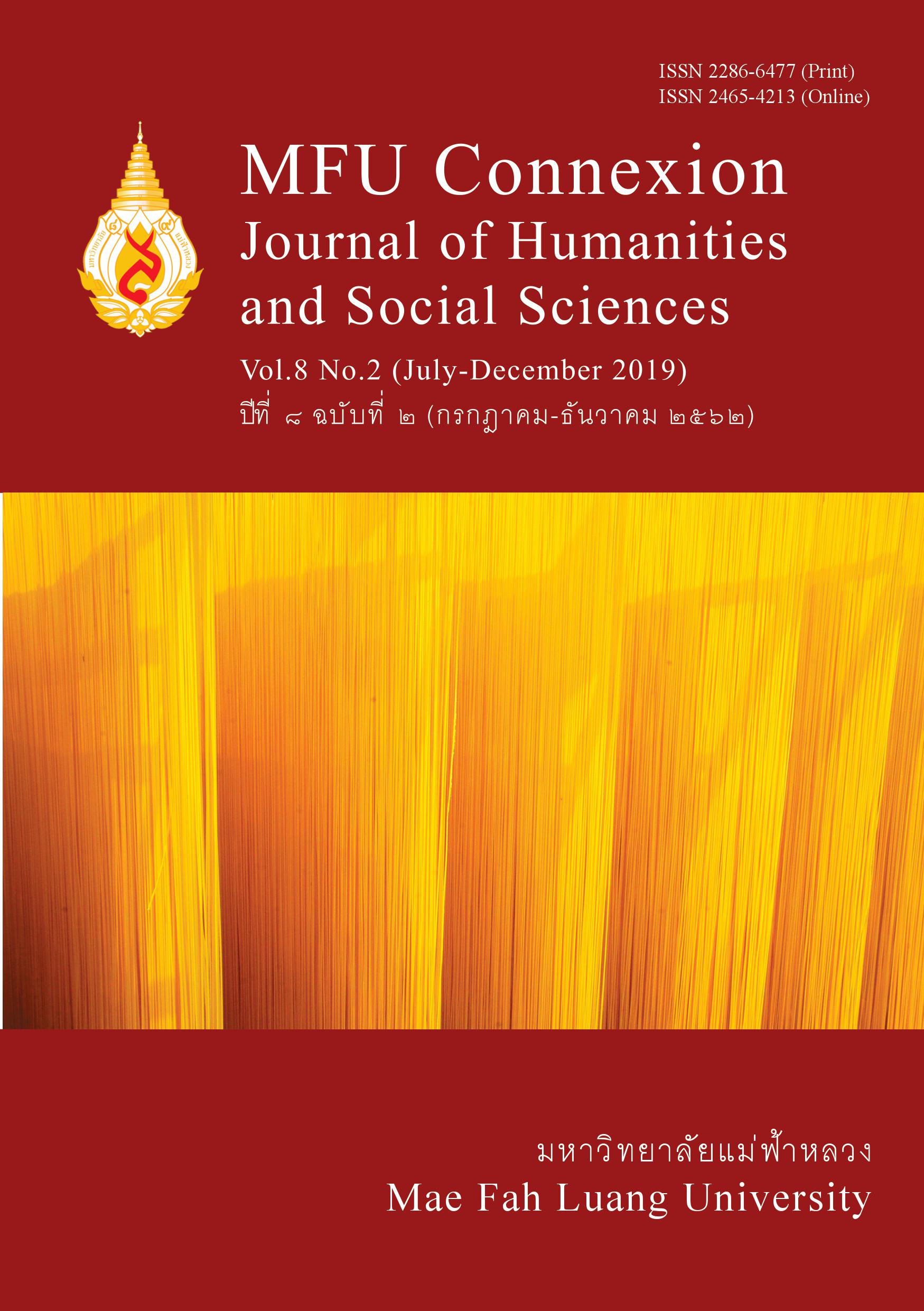Legal Measures for Chinese Tourists with Personal Vehicles for Cross Border Tourism via The Fourth Friendship Bridge between Thai-Laos (Chiang Khong – Houayxay) (in Thai)
Main Article Content
Abstract
This research article aims to study impacts resulting and thereby proposing the suitable measures for the enforcement of the ‘Announcement of the Department of Land Transport on Regulating the Rules, Processes and Conditions on Requesting for Permission, Permission, Period of using vehicles, and the indicating temporary vehicle use in the Kingdom of Thailand for the purpose of tourism or other specific purposes, B.E. 2559’. The study is a qualitative research done by using several techniques which are documentary research, in-depth interviews, focus group discussion, and field study on R3A route.
The results of the present study found that since the announcement has come into force, the amount of Chinese personal vehicles driving into Thailand via Chiang Khong border point has dramatically decreased. This decrease has significantly affected to business sector in the travels and tourism industry of Chiang Rai and Chiang Mai, especially in the area of Chiang Khong District, Chiang Rai. Nevertheless, after critically analysing the suitability of the legal measure, the authors consider that the announcement of the Department of Land Transport should be retained as the main legal measure that governs driving foreign vehicles into Thailand. Notwithstanding, it is worth proposing that some certain provisions of this announcement should be revised. The process of legal improvement should be divided into three steps. In short-term, the complexity and period of applying for permission to drive foreign vehicles into Thailand for the purpose of tourism should be diminished by setting up one-stop service point at the Chiang Khong border area. This includes declaring Chiang Khong to be a free - zone driving area for foreign vehicles on condition that the declaration must be approved by public hearing of Chiang Khong citizen. In intermediate-term, bilateral agreement between the governments of Thailand and China concerning on the recognition of driving vehicles across the borders of those countries should be concluded. Finally, for long term improvement, the national laws regarding driving foreign vehicles across the borders via R3A route should be developed through harmonization of law.
Article Details
Copyright
Connexion: Journal of Humanities and Social Sciences has an exclusive right to publish the accepted articles in any form. However, the author retains the following rights:
1. The right to the ownership of the article;
2. The right to use all or part of the article in his/her other works;
3. The right to re-produce the article for personal use or for use in the author’s organisation, in which case the author must obtain permission from Connexion: Journal of Humanities and Social Sciences;
4. The right to make copies of all or part of the work for educational use or for the author’s use in classroom teaching; and
5. The right to include the work (both the preprinted and printed versions) in an institutional repository.
References
Canada Border Services Agency. (2016) Memorandum D19-12-1 importation of vehicles, Available: https://www.gz-trade.com/listing/ memorandum-d19-12-1-importation-of-vehicles-45a2-349115 [15 April 2019]
Forrest, C. (2019) Paris bans up to 60% of its cars as heatwave worsens pollution, Available: https://www.reuters.com/article/us-france-pollution/paris-bans-up-to-60-of-its-cars-as-heatwave-worsens-pollution-idUSKCN1TS2Z0 [13 July 2019]
Jacobs, S. (2006) Effective and sustainable regulatory reform: The regulatory guillotine in three transition and developing countries, Available: https://www.business-environment.org/dyn/be/docs/81/ Session4.2JacobsDoc.pdf [2 August 2019]
Kallayanapattharasit, R., et al. (2018) Lesson learned from cross-border of “Chinese cars” legal measures and administration of border areas (บทเรียนจาก “รถจีน” ข้ามแดน: มาตรการทางกฎหมายกับการจัดการพื้นที่ชายแดน), Chiang Mai: Erawan Printing. (in Thai)
NationTV. (2016, February 12) Chinese home car spills may be impact of tour business (รถบ้านจีน ทะลักไทย หวั่นกระทบวงจรธุรกิจท่องเที่ยว), Available: https://www.nationtv.tv/main/content/378489355/ [1 August 2019] (in Thai)
Office of Transportation and Air Quality. (2010) Procedures for importing vehicles and engines into the United States, Available: https://nepis.epa.gov/Exe/ZyPDF.cgi/P10081IS.PDF? Dockey=P10081IS.PDF [15 April 2019]
Panitchakul, I. (2016, March 1) Chinese personal vehicles from the busy matter on the road to the national agenda (รถทะเบียนจีน จากเรื่องวุ่น ๆ บนท้องถนนสู่วาระแห่งชาติ), Available: https://www.posttoday.com/politic/ report/419096 [1 August 2019] (in Thai)
Park, J. L. (2004) The United States – Canada smart border action plan: Life in the fast lane, Law and Business Review of the Americas, vol. 10, no. 2, pp. 409-410.
Thairathonline. (2016, August 17) Tourism industry chamber learned effect from the fall of Chinese tourist's cars number (สภาอุตสาหกรรมท่องเที่ยวฯ รับฟังผลกระทบรถท่องเที่ยวจีนวูบ), Available: https://www.thairath.co.th/ content/692167 [1 August 2019] (in Thai)
U.S. Department of State. (2019, April 9) Mexico international travel information, Available: https://travel.state.gov/content/travel/en/international-travel/International-Travel-Country-Information-Pages/Mexico.html [5 August 2019]


